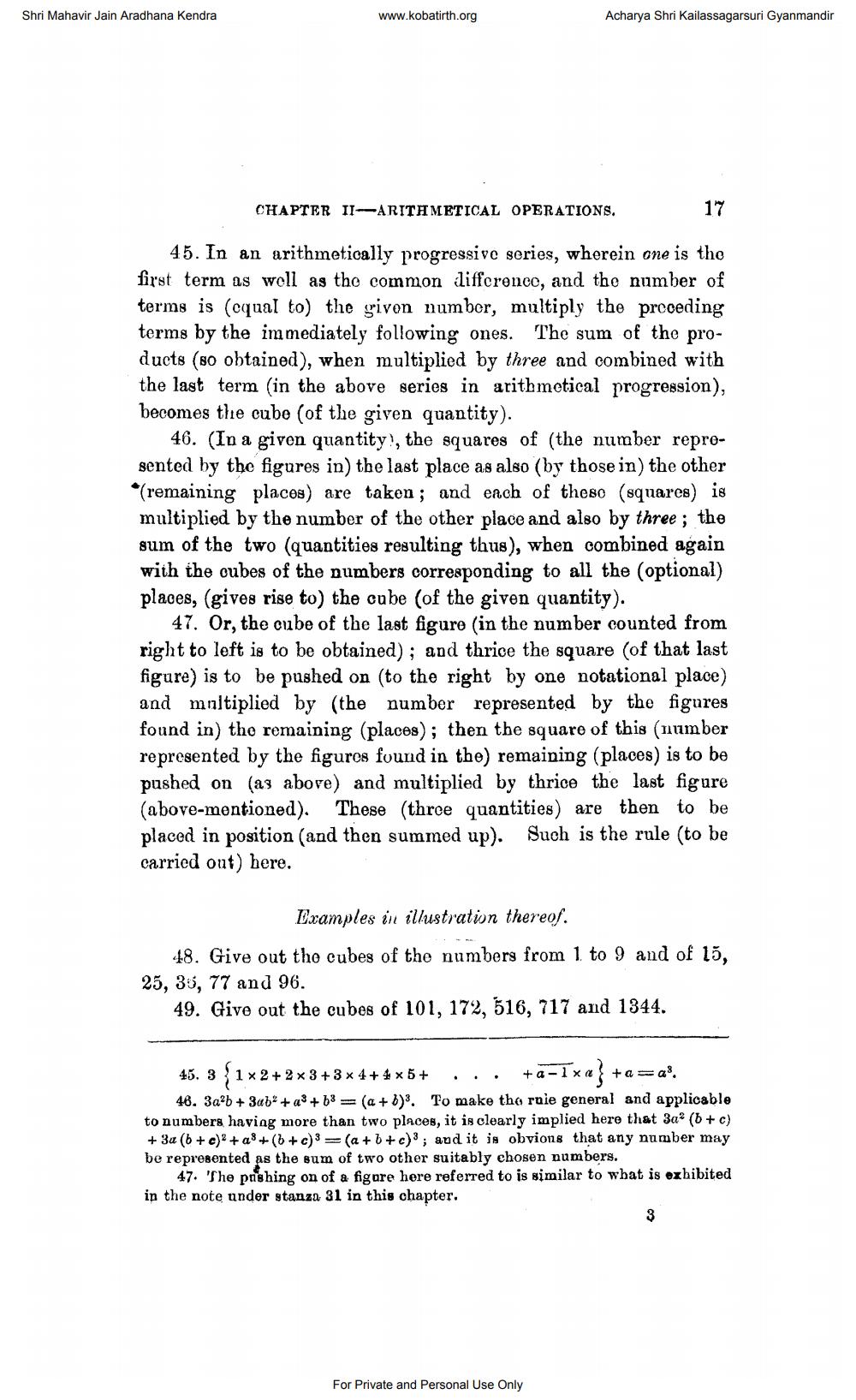________________
Shri Mahavir Jain Aradhana Kendra
www.kobatirth.org
Acharya Shri Kailassagarsuri Gyanmandir
CHAPTER II-ARITHMETICAL OPERATIONS.
17
45. In an arithmetically progressive series, wherein one is the first term as well as the common difference, and the number of terms is (cqual to the given number, multiply the preceding terms by the immediately following ones. The sum of the products (80 obtained), when multiplied by three and combined with the last term in the above series in arithmetical progression), becomes the cube (of the given quantity).
46. (In a given quantity, the squares of the number represented by the figures in) the last place as also (by those in) the other *(remaining places) are taken ; and each of theso (squares) is multiplied by the number of the other place and also by three; the sum of the two (quantities resulting thus), when combined again with the cubes of the numbers corresponding to all the (optional) places, (gives rise to) the cube (of the given quantity).
47. Or, the cube of the last figure (in the number counted from right to left is to be obtained); and thrice the square (of that last figure) is to be pushed on to the right by one notational place) and multiplied by (the number represented by the figures found in the remaining (places); then the square of this number represented by the figures found in the remaining (places) is to be pushed on (as above) and multiplied by thrice the last figure (above-mentioned). These three quantities) are then to be placed in position (and then summed up). Such is the rule (to be carried out) here.
Examples in illustration thereof.
48. Give out the cubes of the numbers from 1 to 9 and of 15, 25, 36, 77 and 96.
49. Give out the cubes of 101, 172, 516, 717 and 1344.
45. 3 } 1 x 2 + 2 x 3 + 3 * 4+ * 5+ ... +a-Txa+a=al.
46. 3a2b + 3ab" + a3 + b3 = (a + b)3. To make the rule general and applicable to numbers having more than two places, it is clearly implied here that 3a* (b + c) + 30 (b + c)*+as+- (b + c) = (a + b + c); and it is obvions that any number may be represented as the sum of two other suitably chosen numbers.
47. The pushing on of a figure here referred to is similar to what is exhibited in the note under stanza 31 in this chapter.
For Private and Personal Use Only




